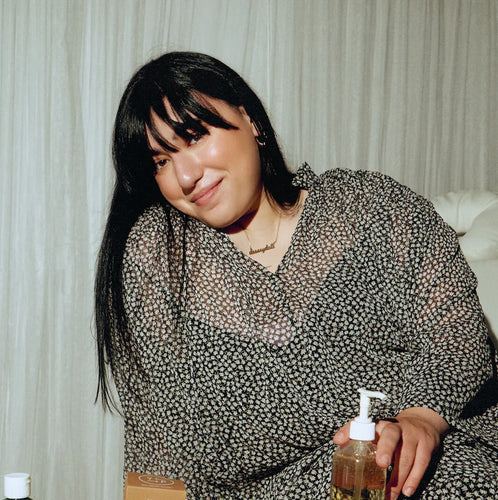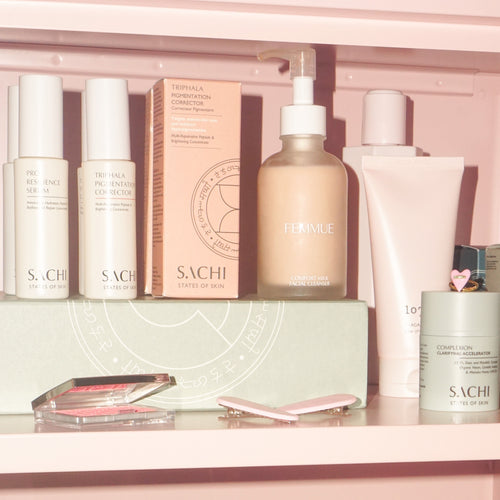Let's Talk
Let's Talk is a series where we invite individuals from all cultures, genders, ethnicities and backgrounds to share deep and personal topics to help us understand and connect better with ourselves and each other.
3 min read
South East Asian Writer Laili Abdeen's (@lit_is_lails) personal writings and childhood memories on the beauty of Henna.
Intricately drawn mandalas, elaborately embroidered outfits, Bollywood music beating from room to room, pockets of dancing, abrupt bursts of laughter, open arms ready to embrace at the door, girls clustered together, children pulling at decorations, Indian sweets overflowing from tabletops — Yes, you’ve guessed it, the South Asian wedding season is upon us.
And my favourite part of all of it? Henna.
Everything about Henna has fascinated me ever since I was 5 years old. My curious eyes have always been entranced by the agile hands of the artist, the steady movement of the hand controlling the cone that oozes with a rich history of self-expression and art. Henna decorated hands are just as much a staple for South Asian weddings as the bride herself, I’d say. Most South Asian women I know look forward to adorning their hands with Henna at weddings and I am no exception.
I have always found the art of self-expression through tattoos intriguing and beautiful yet I didn’t have that option as a Muslim since we were forbidden to perform any permanent alterations to our bodies. The temporary nature of Henna became the perfect substitution, especially if you are someone as fickle as I am. Its fleetingness compels me to appreciate its beauty and before any regret can settle in, it fades away.

But don’t be fooled by its transience because Henna has a long history beyond South Asia. Henna is actually a powder derived from crushing the leaves of the henna plant and its earliest use? Some 9,000 years ago, back to the Pharaohs in Egypt. From the nails of mummies to Cleopatra’s body herself, the ancient Egyptian civilisation was believed to have been amongst the first to use this natural adornment.
Its long history has allowed several cultures to adopt Henna, with various traditions and even superstitions accompanying it. For instance, the act of applying Henna for South Asian weddings usually occurs on a Mehendi (or Mehndi) Night where the bride and her entourage of loved ones not only decorate their hands but play games, sing, and perform dances that may have taken months to choreograph and rehearse. There are also Indian superstitions such as how the darker the bride’s Henna reveals itself, the stronger her marriage will be. Another superstition being if the bride’s Henna outlasts her grooms, she will be well-loved by her in-laws.
I only ever knew of Henna being applied to our hands, but at 10 years old in a hair salon in Little India, Singapore, I stumbled upon a new discovery.
As the stylist in the hair salon snipped away at my hair, I smelt the tantalizing scent of Henna for the first time in a hair salon. Curious, I looked around and noticed a hairstylist massaging what looked like a clump of brown mud into a customer’s head of hair. After several moments of adjusting my posture and squinting my eyes to get a better look of the substance, it finally dawned upon me that it was Henna! I was perplexed. Never had I seen Henna in the form of such a thick paste lumped into a round bowl. Somehow, I felt slightly disgusted by the sight of henna being applied onto hair as it defied what I knew. I couldn’t quite comprehend this sight before me yet my eyes were enamoured by the tresses of red lava cascading down the woman’s back. Now whenever I think back, perhaps then my mind couldn’t make sense of how something that looked rather nauseating produced such a beautiful, vibrant colour.
"What I had mistaken as a messy, unappealing practice when I was younger was actually the natural herbs of a tradition that has been long established...It made me realise the value and importance of traditional ingredients as modern practices (like dyeing our hair) are often built upon or inspired by our traditional practices."
Ironically, I soon began to fall in love with the idea of having luscious ruby locks much like Rihanna or Hayley Williams in 2010. After several unsuccessful attempts at convincing my mother to allow me to dye my hair, she finally relented and for the first time in my life, I applied chemical bleach to my black locks. Yet my dream of wearing that ideal hair colour was cut short as it was only a few months after that I ended up with damaged hair which scarred me from chemical bleaching ever since.
Then an epiphany hit when I recalled my encounter in that hair salon several years ago. A mix of guilt and embarrassment hit me as I never noticed the irony of what I had been longing for. All this time, I've wanted the burgundy hair sported by these Western icons yet I sought it in the wrong places. If I had taken some time to appreciate the use of Henna on hair, I could have escaped the unfortunate experience of damaging my hair.
I felt guilty for never fully recognising the beauty of Henna as a traditional ingredient not only for our hands but our hair too. More importantly, I was embarrassed by my initial disgust towards this traditional practice that was a part of my culture, something that I should have been proud of. What I had mistaken as a messy, unappealing practice when I was younger was actually the natural herbs of a tradition that has been long established and was a great natural alternative to packaged dyes. It made me realise the value and importance of traditional ingredients, as I recognised how modern practices (like dyeing our hair) are often built upon or inspired by our traditional practices.


Now in my twenties and armed with true love and appreciation for our ancient arts and beauty practices, I mustered the courage to dye my hair again, but this time, with Henna. The smiles of the stylist and the strong scent of the herbs reminded me once again of how Henna is more than just a form of art. It symbolises a form of self-expression rooted in culture and a tradition that ties us together.
At that moment, as she left the herbs in my hair to pigment, I felt a sudden sense of relief wash upon me. I was relieved that I finally learned about the importance of not only traditional ingredients but of my culture and the value of its traditional practices. More often than not, the best form of self-care may not necessarily come from glorious new inventions but simple yet effective age-old cultural traditions.
Reference
[1] Tribune. (2014, August 7). A brief history of henna. The Express Tribune. https://tribune.com.pk/story/741476/a-brief-history-of-henna
[2] K.F.S., & N.Z. (2020). Silk & Stone - Origin and History of Henna. Silk & Stone. https://silknstone.com/about-henna/
[3] Interesting Indian Wedding Beliefs And Superstitions Passed On From One Generation To Another. (2017, November 20). BollywoodShaadis. https://www.bollywoodshaadis.com/articles/indian-wedding-beliefs-1985



